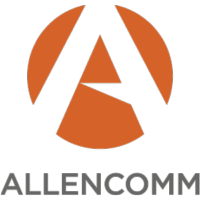Learner Ownership In eLearning Motivates Employees
The great thing about eLearning is the flexibility. For Learning and Development professionals and Instructional Designers, the benefits of developing an eLearning training program include the ability to easily customize content and personalize it to the learning audience. Benefits to the organization can include reduced seat times and greater flexibility in scheduling learning time; for employees, it’s the increased accessibility of courses and greater control.
In fact, user control for employees is a critical component of eLearning—and not just for the convenience. A greater sense of control is tied to a concept called “psychological ownership,” and it’s a vital factor in motivation, engagement, and the resulting success of the training program. After all, greater buy-in from learners makes it more likely they will learn and acquire the desired skills needed to improve performance.
What is psychological ownership? It’s the feeling of personal identification with an idea, concept, or object. It’s tied to the sense of self-identity and belonging that we sometimes attribute to our job description, items we’ve bought, and preferred activities. A feeling of ownership most often happens when we’re inspired, have a clear preference, and a sense that we have influence or control.
In learning, a sense of ownership often can develop when we know new skills will contribute to our success. It increases motivation to learn, helps us to remember information, gets us to think more deeply about a subject, and provides greater satisfaction overall at participation in a training.
So, how do you build psychological ownership into your course design? Of course, the most important thing is to help learners feel that the training will provide them with value. A learner that doesn’t feel the training is applicable to what they do will naturally feel that their time is being wasted. Instead, you want learners to feel that time spent in training will help them to more effectively perform daily tasks, to be more successful, competent, and respected, and that it is a path to professional advancement if desired.
Additionally, here are 5 vital methods to increase user control, and therefore enhance and encourage learner ownership during the learning process.
1. Accessibility
Your learners won’t feel a sense of control if the learning delivery system doesn’t work for them. Fix that by designing your course to work with the devices and browsers available to your team. Consider also internet access and speed. Make sure 100% of your learning audience can scroll, navigate, click, and play the media.
2. Navigation
Organize your content to be simple to find. Use standard conventions. New designs may seem slick and updated, but stick with the standards, like scrolling. It may be conventional, but it’s also instinctive, simple, and doesn’t distract from learning. It also saves valuable time better spent learning new skills instead of how to navigate your LMS.
3. Independence
Are you including media of any kind? Give your learners the option to control playback at a speed they prefer. Enable controls to allow for playback and later review. Do this for visuals (video), diagrams, audio, and text content. Timed functions can create frustration and make it easy to miss things.
4. Attention
Consider the amount of information people can reasonably be expected to take in within a session and course. Don’t overload your learners. Instead, use microlearning, modules, and downloadable reference sheets for review later. Also, don’t overload the user interface with too many sounds, sights, popups, and other distractions.
5. Exploration
There’s a concept called “information scent” in web design you will want to use to help your learners explore the content. Simply explained, it has to do with how people find information they need when viewing web pages. If they want to find something they consider valuable—either to answer a question or review, for example—they look for clues. You can help increase their success (and reduce the potential for frustration) by adding clear headers, hyperlinks, summaries, and images that point the way to easily find the information they need.
Conclusion
To design more engaging digital learning, you must consider adding tools and elements of user control to increase learners’ psychological ownership in learning. Learning and Development teams and Instructional Designers know it’s a simple way to increase the effectiveness and ROI of your eLearning courses.


